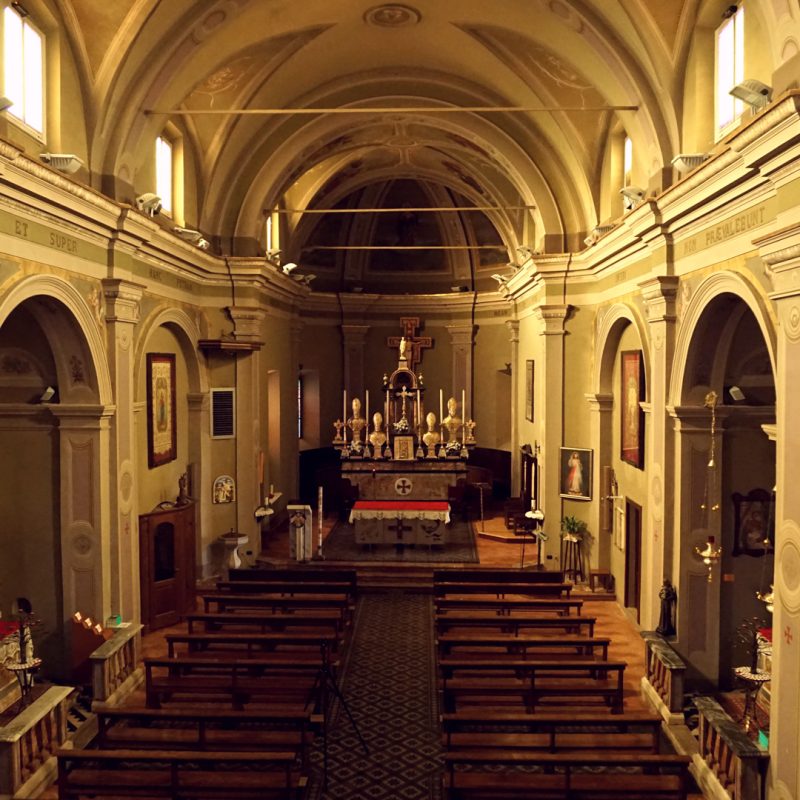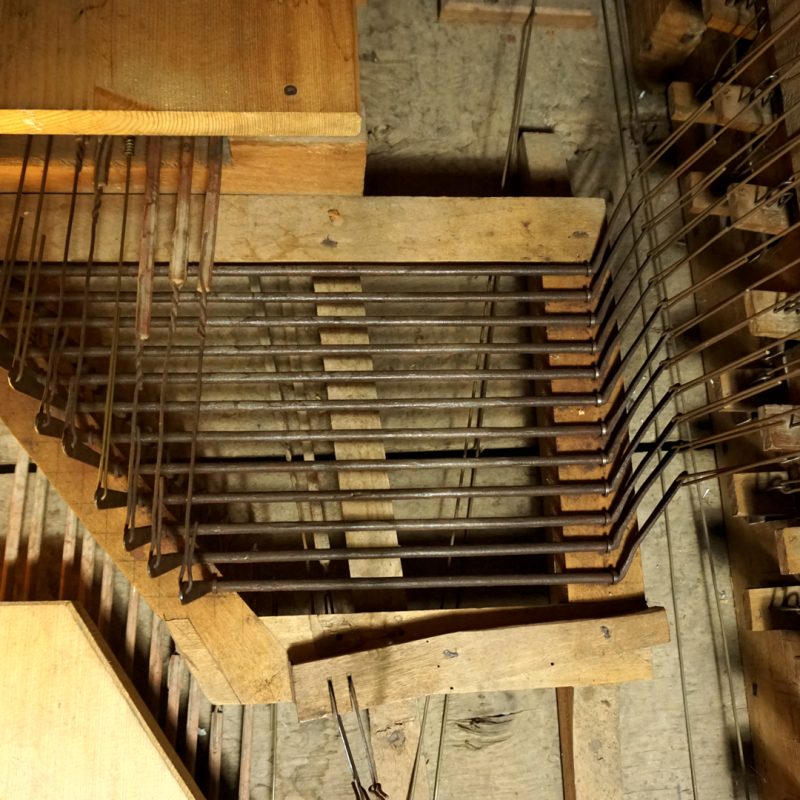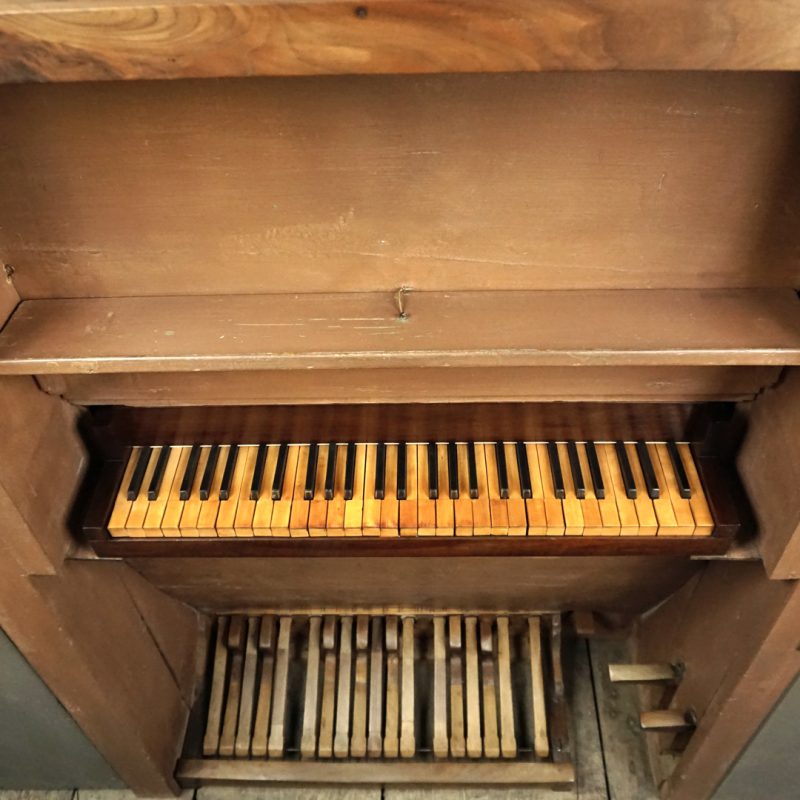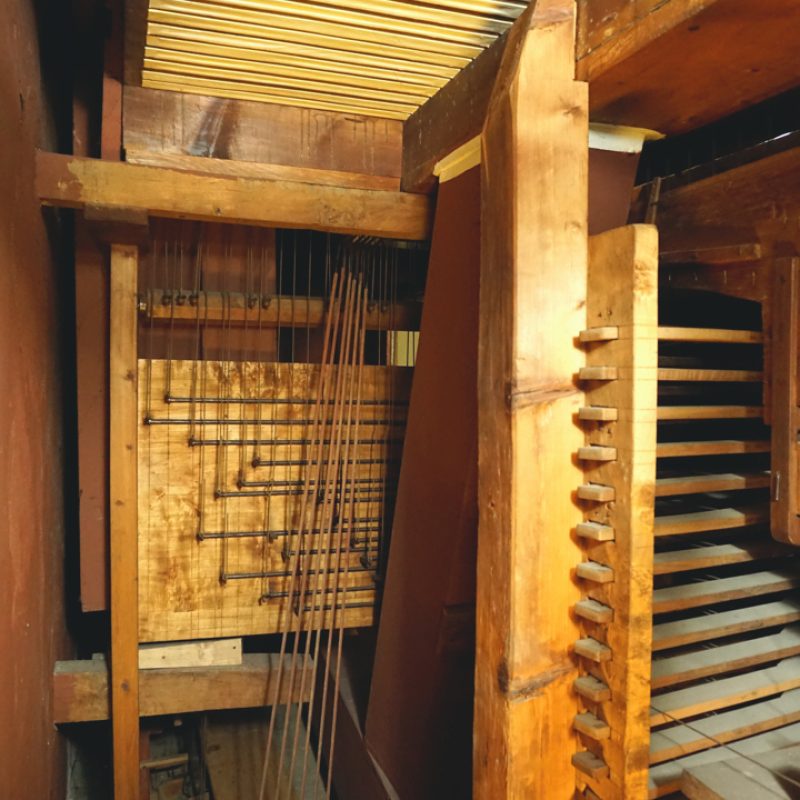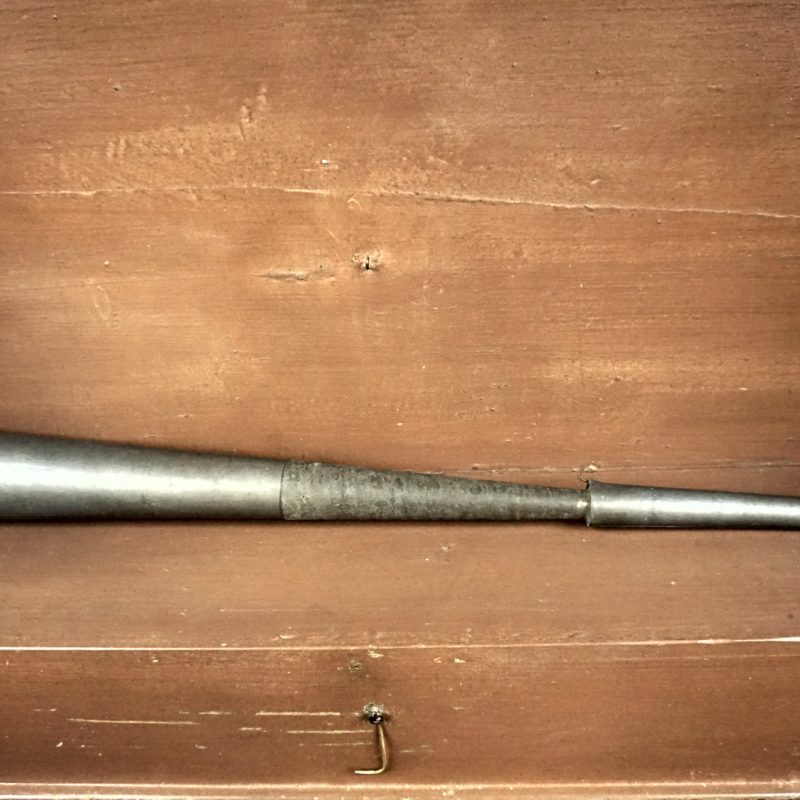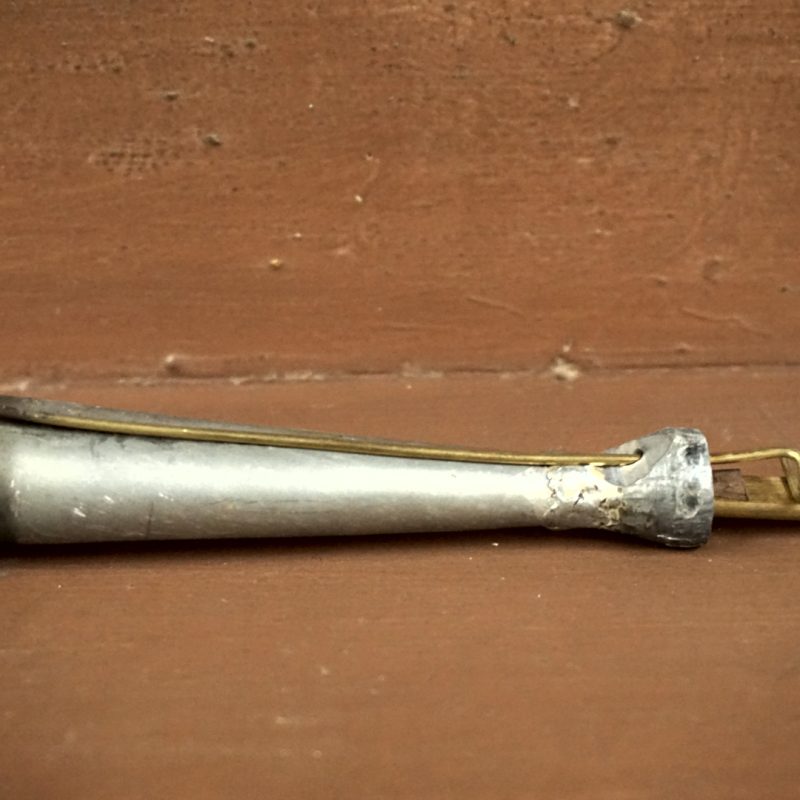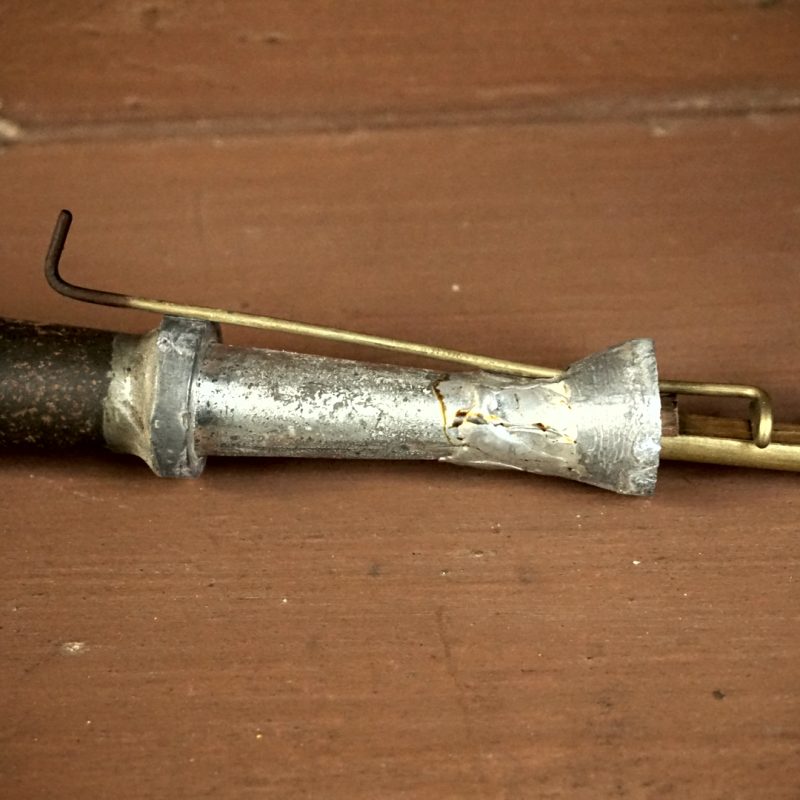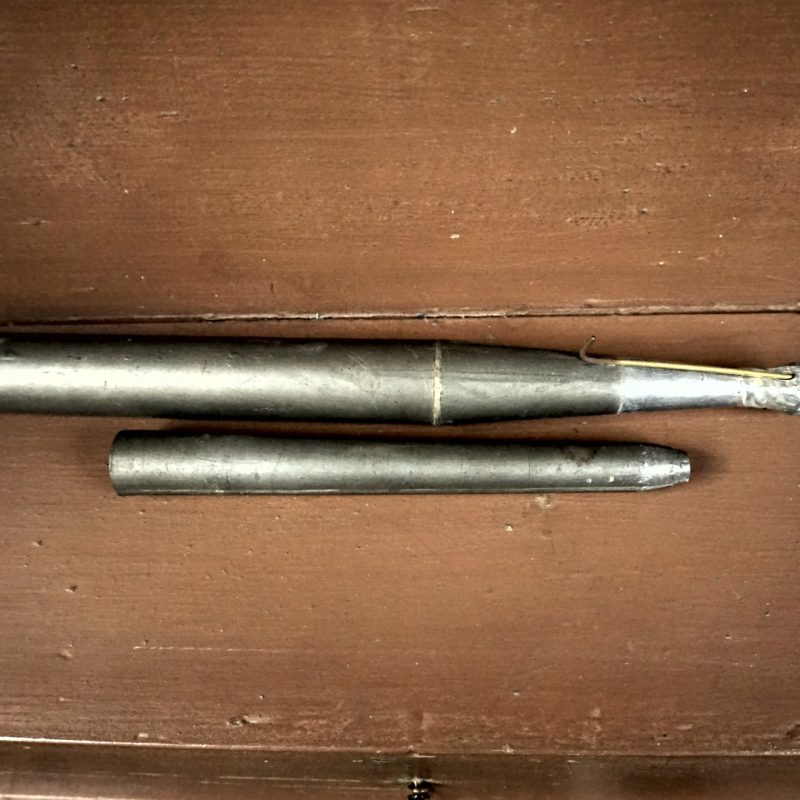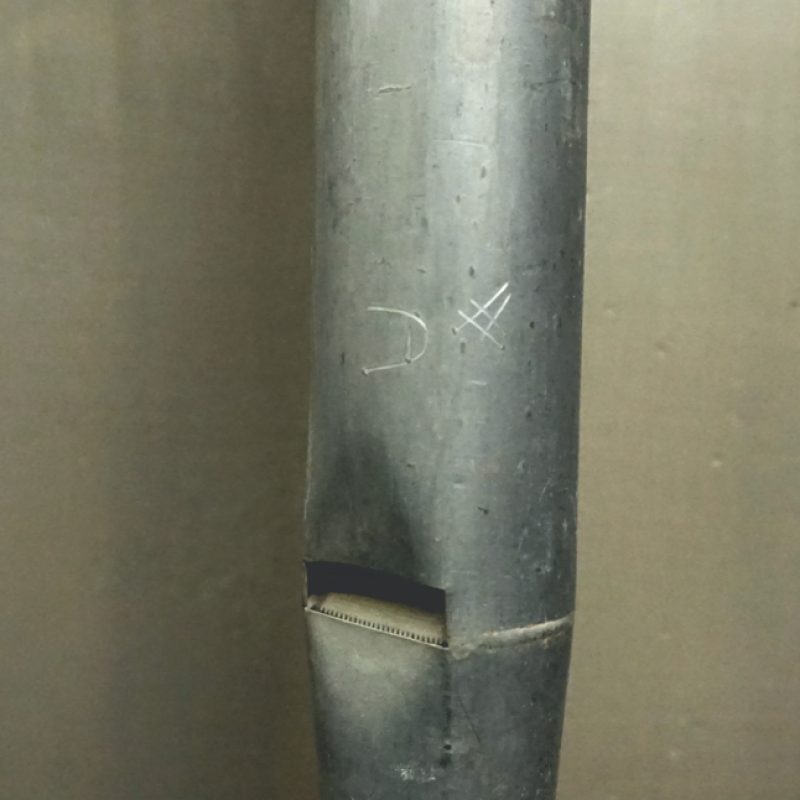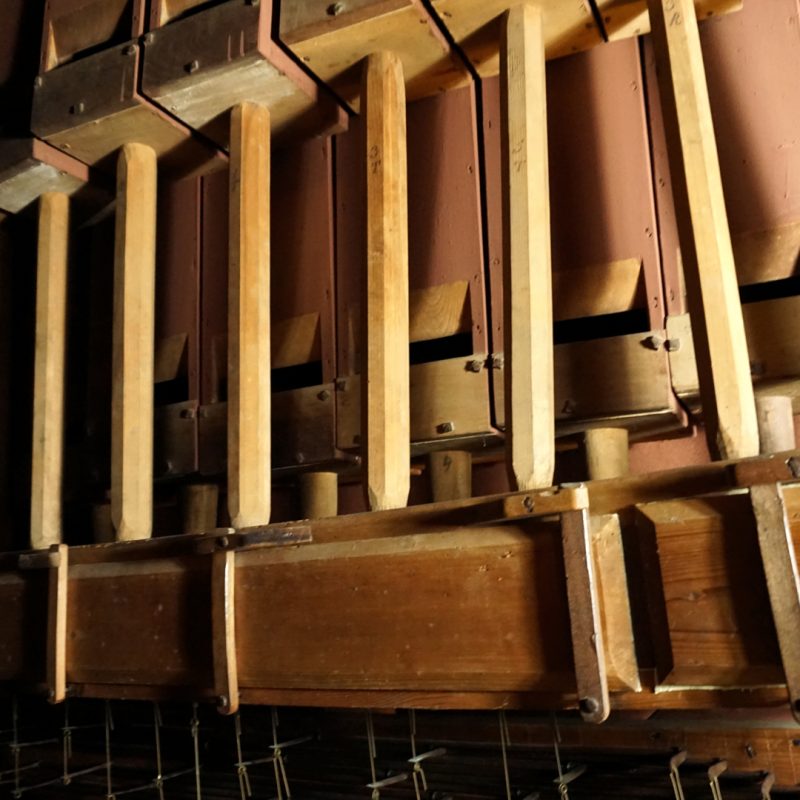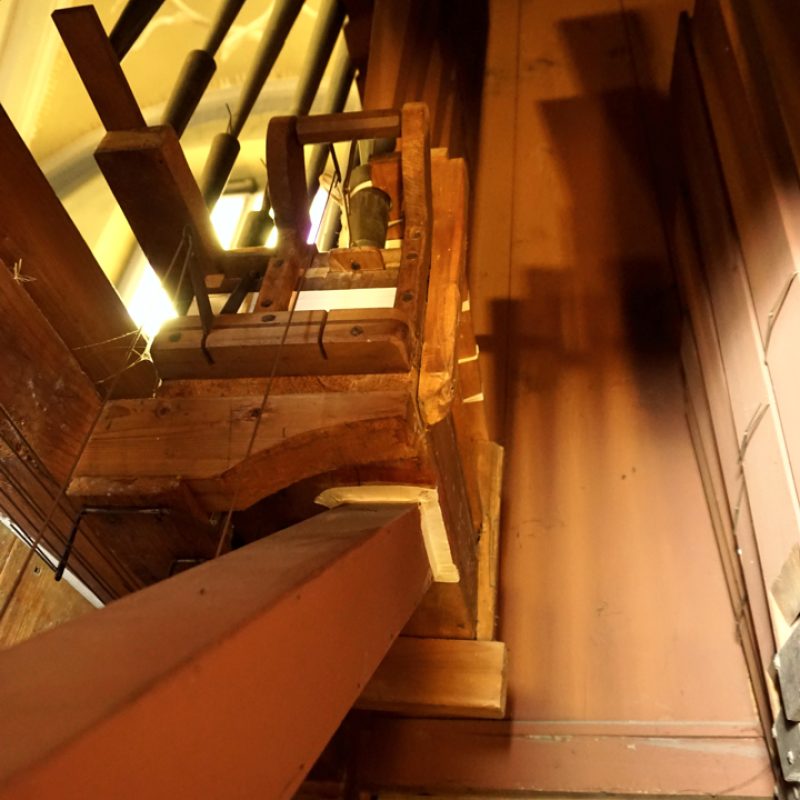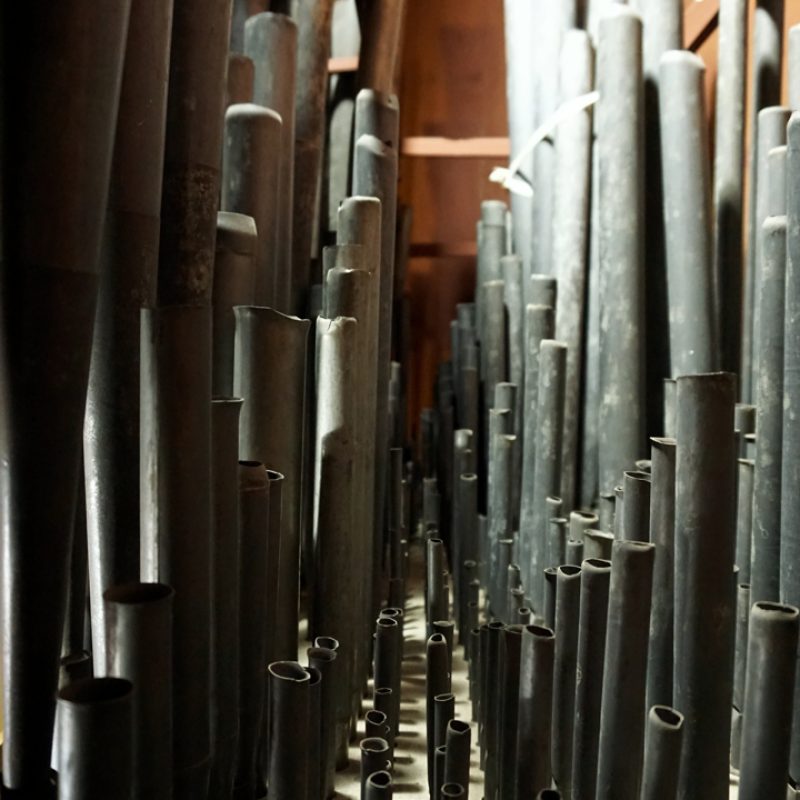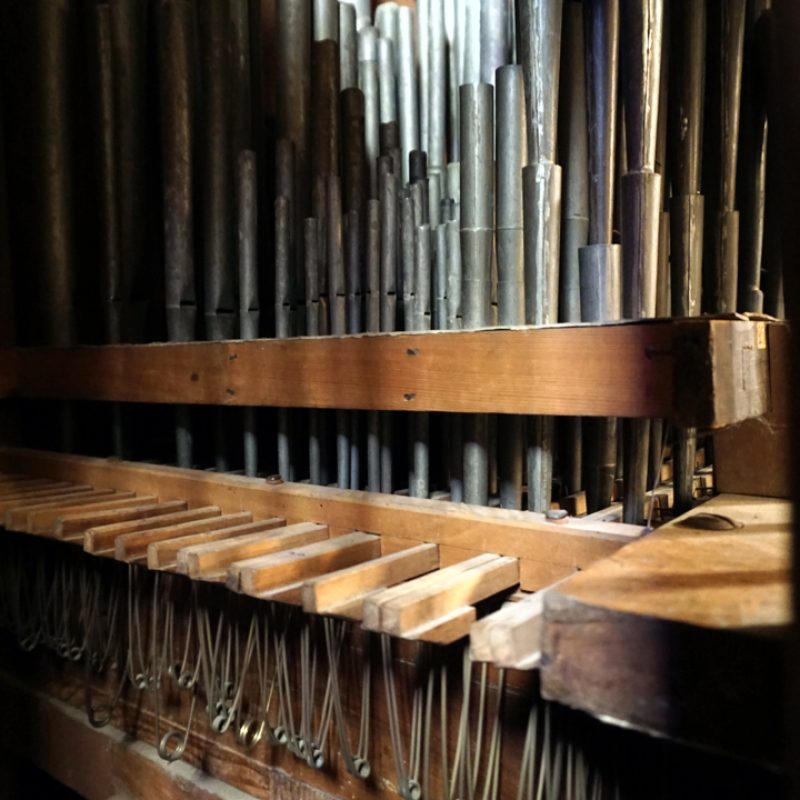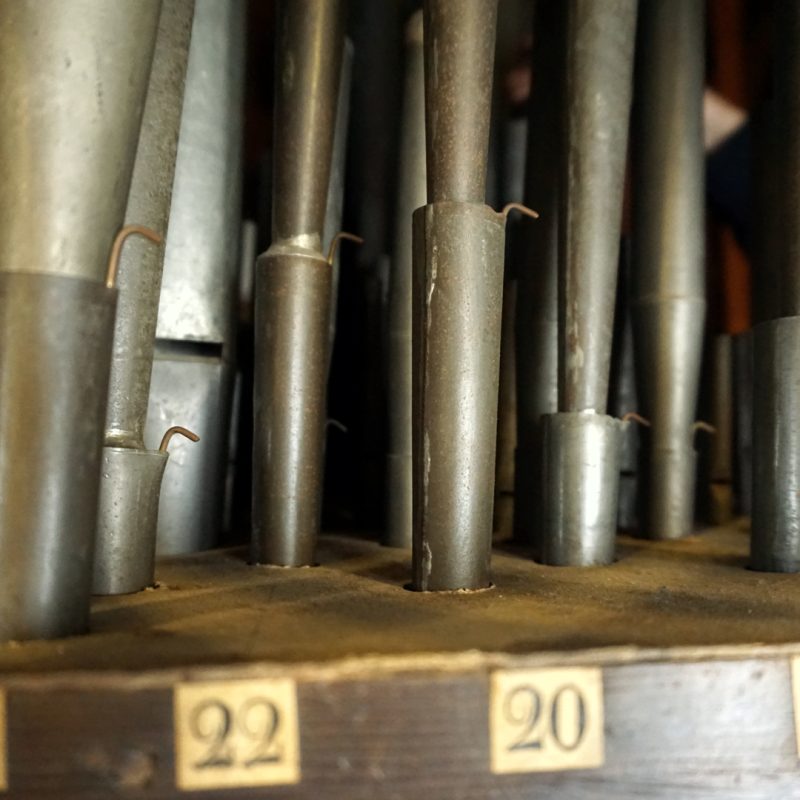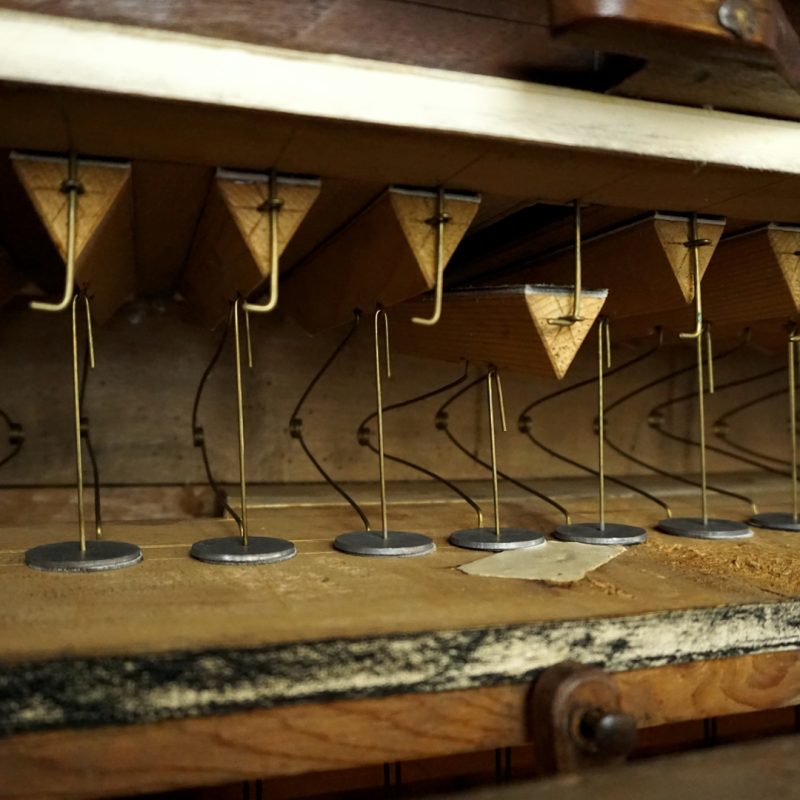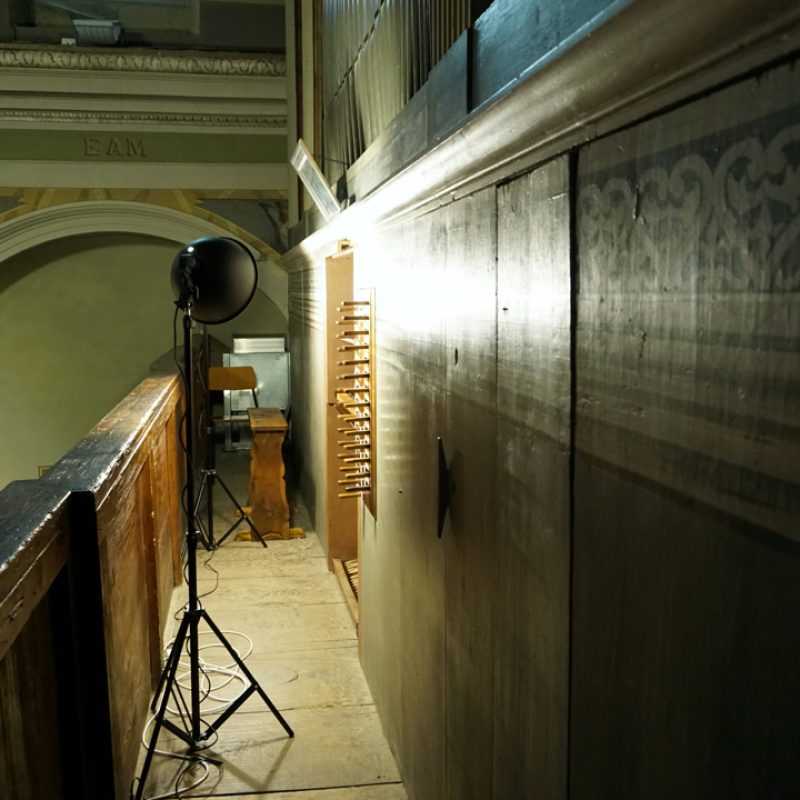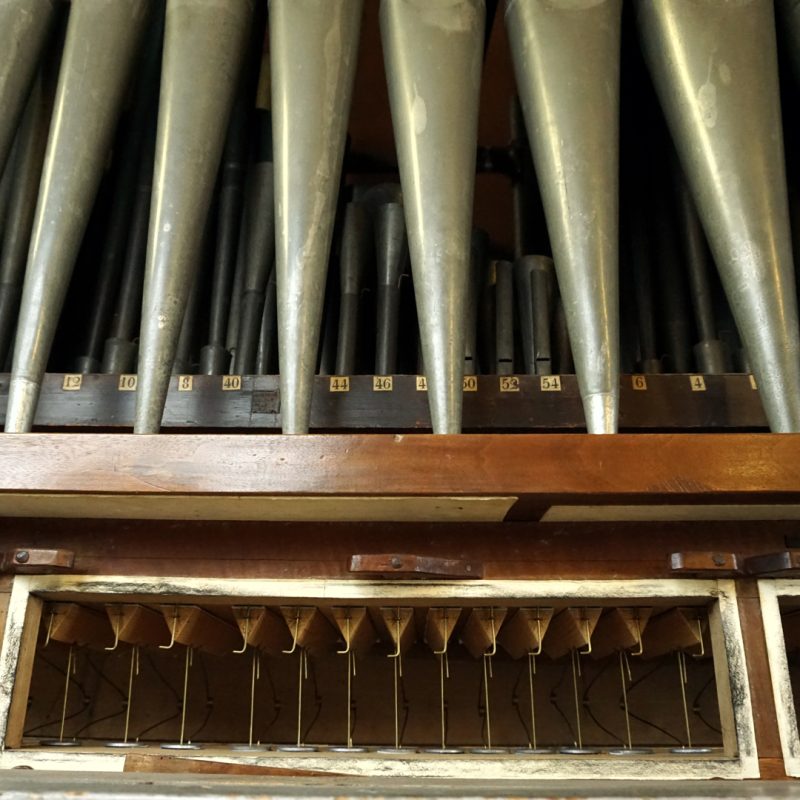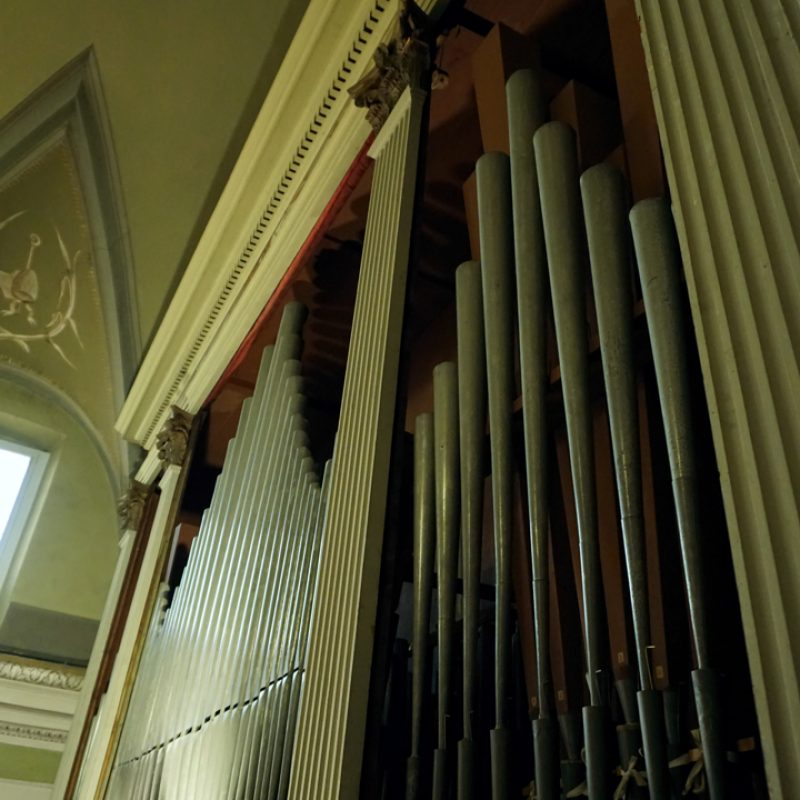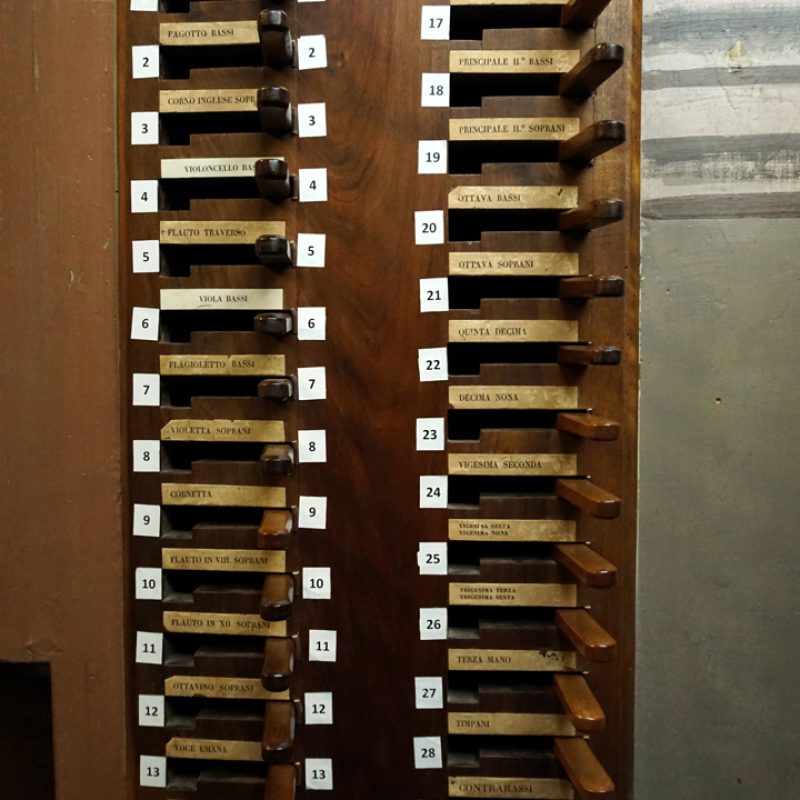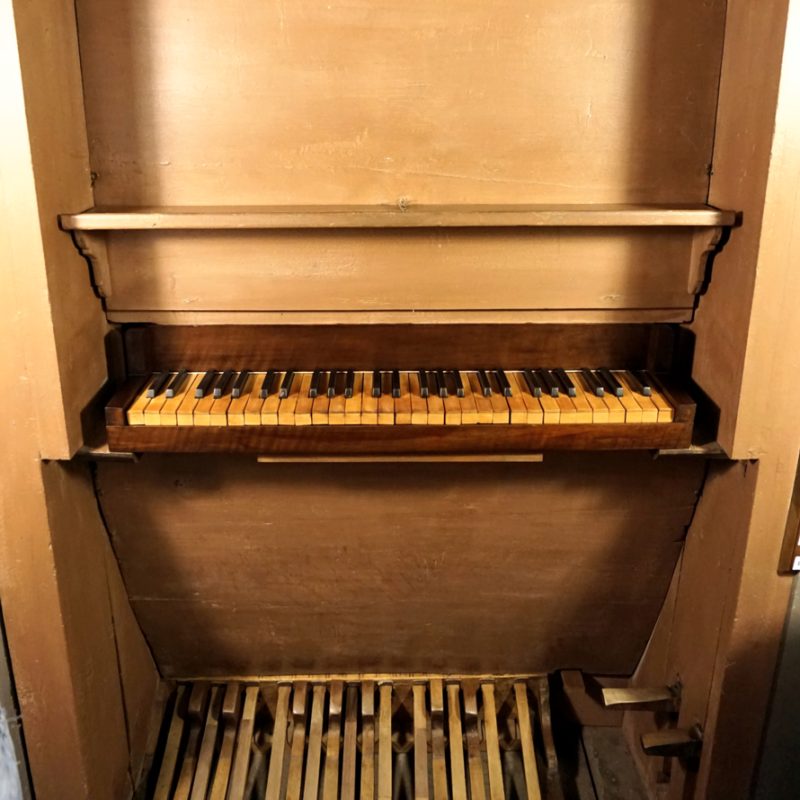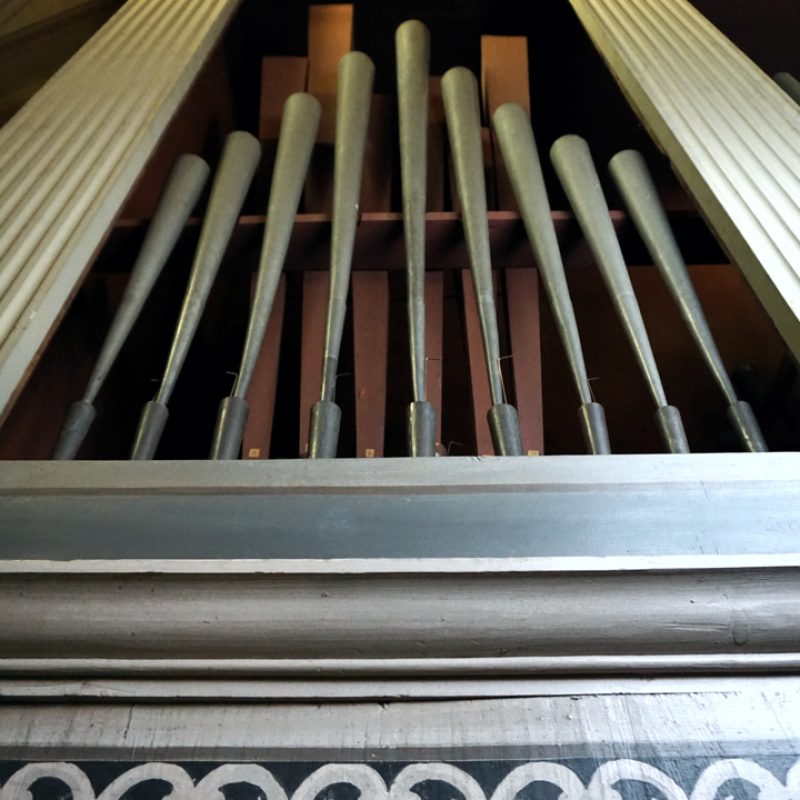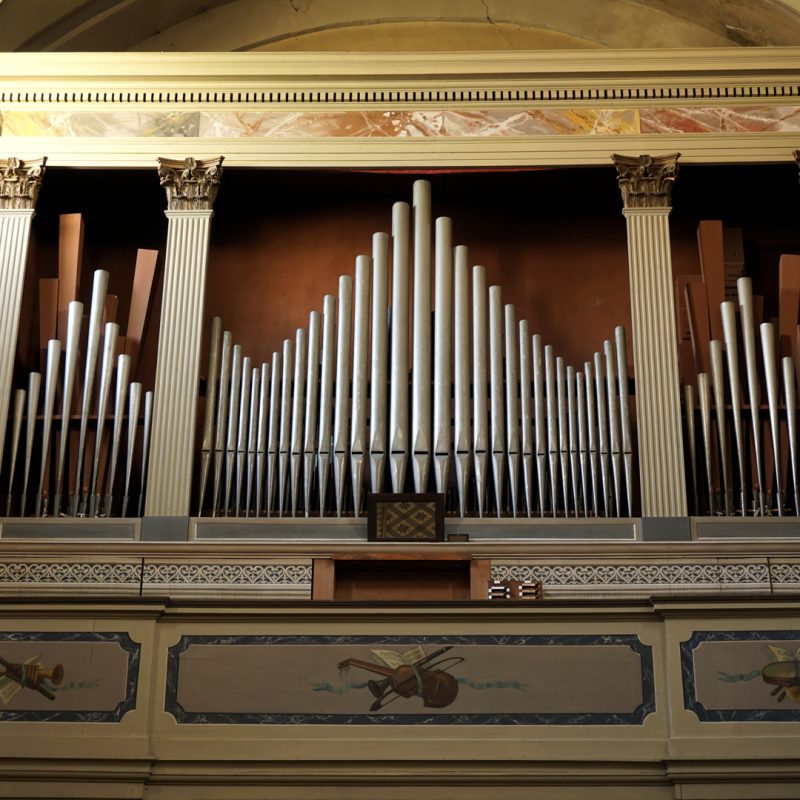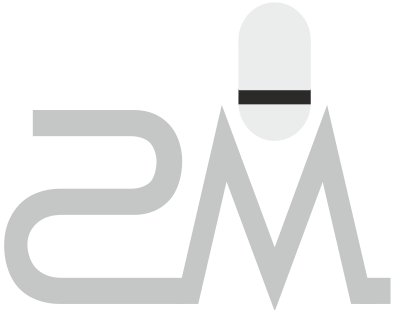
HauptWerk SampleSet
Biroldi 1838
ORGANO A CANNE VIRTUALE / VIRTUAL PIPE ORGAN
The “mighty pipe organ” of Inarzo, one of the finest works of Luigi Maroni-Biroldi, key personality of a famous dynasty of organ builders who worked between the end of the 18th century and the first half of the 19th century in Northern Italy.
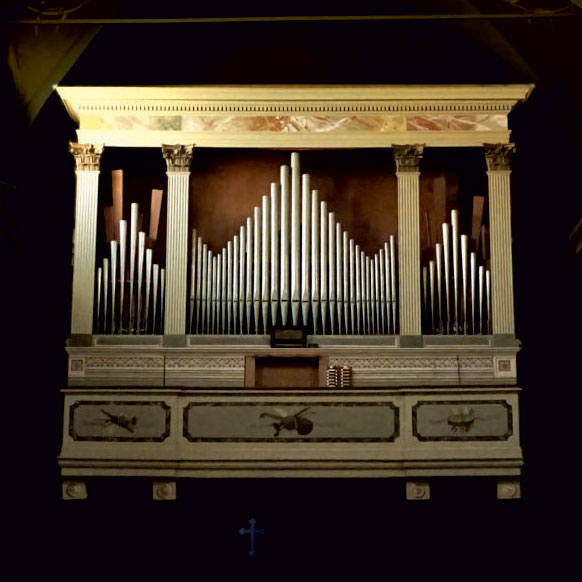
Biroldi 1838
98,00€
Price is taxes included or exempt depending on the billing country
Audio / Video Samples
Organ and Sampleset info
Sample Set for HauptWerk
Recording: 96 KHz @ 24 bit on 2015 in “SS. Pietro e Paolo” Church in Inarzo, Varese, Italy.
Sampleset samples: 48 KHz @ 24 bit stereo, with 1 loop and 3 releases.
Perspectives: Direct, Diffuse, Rear.
Package dimension: 22,8 GB (split over 6 RAR files).
Approximate RAM consumption:
24bit—lossless compression—full release samples: 26,3 GB
16bit—lossless compression—full release samples: 15,5 GB
Direct @ 24bit + Diffuse and Rear @ 16bit—lossless compression—full release samples: 22,6 GB
Direct @ 16bit—lossless compression—full release samples: 11,5 GB
__
FREE DEMO VERSION:
Package dimension: 5,2 GB (1 RAR file).
This version offers the Direct-wet perspective only with limited control panel features enabled.
Occasionally a soft bell is played over the samples.
__
The user interface includes the following tabs:
- a main console with drawstops, keyboards, pedals and effects;
- a “big jamb” interface, without the console window, designed to suit touch screen usage;
- an “alternate interface” with stops actioned by buttons instead of levers and a standard screen combination set of 10 general memories;
- an “enhancements” tab with some options and settings, see section below for details;
- an “organ info” panel with the description on the organ distributed on different tabs;
- various photos selectable with buttons at the footer of the screen page.
All the layouts described above are screen responsive to both 4:3 and 16:9 ratios.
Keyboard splits: For greater compatibility with the organ literature of different epoques and schools, the Sampleset is provided with two additional keyboard splits: B2-C3 and C3-C#3 (the original split is C#3-D).
Pedalboard: Real pedalboard extension is C1-E2; for more flexibility the pedalboard extension is set to 2 octaves. The second octave of the pedalboard is permanently coupled to the first octave of it. Player can limit the extension to the original one via MIDI pedal settings in the Organ Settings/Keyboard options or right-clicking the pedalboard in the Console interface.
“Terza Mano”: In the real organ, the Terza Mano is activated both via hand drawstop and F2 pedal, as per typical configuration in organs of that period. In this sample set, the F2 pedal is set to play the corresponding note instead. In case the player wants to activate the pedal per exclusive use of Terza Mano effect, he can:
1) right-click on the pedalboard in the Console interface screen, choose Auto-detect function, and set C1-E2 extension for sounding pedals pressing the corresponding pedals in the real pedalboard;
2) right click on the Terza Mano lever in the Console interface screen, choose Auto-detect function, and press the F2 of the real console pedalboard.
All the above configuration steps can be achieved following different procedures than the ones reported here.
“Combinazione libera alla lombarda” – Free combination:
A duplicate set of stop buttons has been added to the interface in order to keep the role of this device in the virtual version of the instrument.
The organist can prepare a single combination of stops activating the buttons in the COMB. LIBERA sections. Once prepared, the combination can be activated (or deactivated) actioning the COMB LIBERA button/lever on the interface. The stops of the combination will be added (or detracted) to the stops already playing.
HauptWerk’s Wind Model is applied to sampled pipes in order to match real pipe organ wind dynamics. The effect can be reduced or deactivated if desired. Please consult standard program documentation at this regard.
ENHANCEMENTS
The fifth tab of the interface offers the following options in order to improve the playing experience:
· Three different stereo perspectives are available with specific level control: Direct, Diffuse and Rear;
· Mechanical noise (Meccanica): this control provides the desired noise sound volume quickly (stops, keyboards and other devices);
· Blower noise (Motore): this control can sets the sound level desired. The Blower can be activated or deactivated with the switch on the main Console or on the additional tabs.b Please note you will need to activate the switch in order to play the instrument as it simulates the switch of the blower.
· The Chiff level slider provides a pseudo-random system to pipe speaches. Setting the slider to the minimum, the effect is progressively reduced to just one chiff. This is a «light effect» with the intention to add natural speach to the piping without alterating the character of the instrument.
· The Release slider is a pseudo-random effect that shuffles 3 different releases for each release timing. As for the above, this is a light effect.
· Organ Detuner (Accordatura): this slider applies progressive pseudo-random detuning to the samples, incrementing or decrementing their relative pitches, with different levels between treble, bass, flues and reeds.
· Keyboard Split (Spezzatura): this device will provide the option to set 3 different keyboard splits:
C#-D is the original split and the default one. For greater compatibility with the organ literature of different epoques and schools, the sampleset is provided with two additional keyboard splits: B2-C3 and C3-C#3.
· Pedal to Manual (Unione Tasto-Pedale) coupler disabler: the real organ has pedals always coupled to manual keys, this option will toggle the device. In order to allow easy access to this enhancement during performances, the control has been replicated on the Console screen, Big Jamb and Alternate console.
· Bombarda 12’ to 16’: this is an option that substitutes the first five 8’ notes of the original stop with 16’ samples, obtained from samples of the same rank.
The pitch of the sampleset has been set to 440Hz – equal temperament while the real organ is set to 454 Hz @ 18°C Tartini-Vallotti temperament.
For any additional information regarding HauptWerk samplesets please visit the official website: www.hauptwerk.com
Organ Features
The adjective «mighty» is due both to its generous dimensions in relation to the volume of the church and to its bright voicing. The instrument was installed in 1838 and is one of the most noteworthy in the territory of Varese, as well as being one of the few Biroldi organs still in their original condition.
After a long period in precarious conditions, its brilliant voice returned to life in 1995 thanks to the restoration work carried out by the organ workshop “Dell’Orto e Lanzini” of Dormelletto (Novara).
The historic value of this organ depends not only from its sound character and aestetics, but also because all the pipes are still original. Not being alterated over time, its pipes preserve the imprint of Biroldi’s manufacture. For these reasons this organ can be considered a valid representative of Biroldi’s organ school, which differs from other organ schools because the Biroldi family always adopted singular solutions that cannot be found in other organs of the same period in Italy. Some distinctive traits are for example the strong and brilliant Ripieno, and the particular manufacture of reed pipes, very similar to some French reeds of the 18th century.
At the time of this document writing, the instrument is in good condition, regularly maintained and played during the masses throughout the liturgic year as well as played for concerts.
Width at the base: 7 m
Depth: 1,5 m
The highest pipe of the prospect is the first D of the Principale 8′
The pedalboard has «a leggio» shape and has 18 pedals; the first 12 are connected to 12 real notes, the next upper 5 pedals repeat the first 5 real notes and the last one activates the “Terza Mano” device. This mechanism allows temporary activation while the organist is playing. The Terza Mano is an 4′ octave coupler only effecting the treble part of the manual keyboard, mostly used to undeline melodic passages or to allow «sforzando» effects.
The pedalboard is permanently coupled with the manual and is entirely made of wallnut. On the right side of the pedalboard are located the usual auxiliary pedal commands: the «Combinazione Libera alla lombarda» (free combination), the Tiratutti that adds all the Ripieno stops to the currently drawn stops, and the Timballi (Rullante) pedal that activates a set of four concurrently speaking pipes giving the impression of a drumroll. The above set of pedals is a typical configuration in organs of the «Classical» period in Italy.
The Real pedalboard extension is C1-E2; for more flexibility in this sampleset the pedalboard extension is set to 2 octaves. The second octave of the pedalboard is permanently coupled to the first octave of it. The player can limit the extension to the original one via MIDI pedal settings in the Organ Settings/Keyboard options or right-clicking the pedalboard in the Console interface.
The main chest (somiere maestro) hosts all the pipework of the manual stops. It is «a vento con borsini» type windchest, with individual wind valves for each pipe.
Two slider windchests, one each side of the main chest, host the reed pedal stops, Bombarde and Tromboni, as better described in the facade of the organ.
Two direct valve windchests are placed on the back side of the instrument against the wall. The one on the right side hosts the Contrabassi 16′ and related 8′ harmonic reinforcement pipes.
The other chest hosts the Timpani and Timballi pipes.
The wind generation consists of a pump system with the additon of a couple of bellows acting as stabilizers. This system is placed in a small room near the organ, where the staircase is also located. The port-vent is made of wooden square shaped ducts. An electric blower has been added without altering the original blowing system.
In the virtual version of the organ, stops have been placed in a different (fantasy) layout in order to better exploit the screen available space.
In the list below the footage of each stop has been added as additional information; real stop names do not include it.
Registri di Concerto (Left Column)
Trombe Soprani 8’
Fagotto Bassi 8’
Corno Inglese Soprani 16’
Violoncello Bassi 4’
Flauto Traverso 8’ (en facade)
Viola Bassi 4’
Flagioletto Bassi 1’
Violetta Soprani 8’
Cornetta Soprani 2’ + 1 3/5’
Flauto in VIII Soprani 4’
Flauto in XII Soprani 2 2/3’
Ottavino Soprani 2’
Voce Umana 8’
Tromboni 8’ (en facade)
Bombarde nei Pedali 12’ (en facade)
Registri di Ripieno (Right Column)
Principale Bassi 8’ (en facade)
Principale Soprani 8’
Principale II Bassi 8’ (beginning 2nd C)
Principale II Soprani 8’
Ottava Bassi 4’
Ottava Soprani 4’
Quintadecima 2’
Decimanona 1 1/3’
Vigesima Seconda 1’
Vigesima Sesta e Nona 2/3’ + ½’
Trigesima Terza e Sesta 1/3’ + ¼’
Terza Mano
Timpani 6’ (2 pipes per note)
Contrabassi 16’ + 8’
Keyboards:
The structure of the manual is in fir, with diatonic keys covered in boxwood and chromatics covered in ebony,
Pedals are made of walnut.
The stops panel and stop levers are of walnut.
The main windchest is in walnut with note valves in fir.
Other windchests, port-vents and reservoir/bellows mainly in fir.
The gaskets/seals are in leather.
Mechanical movements and levers are in iron or brass.
Piping:
All the pipes of the manual ranks are in metal: lead and tin in variable proportions depending on the rank and its related parts.
Flue pipes of the pedal ranks are mainly in fir and metal for the reeds with resonators in fir.
All the reed tongues are in brass.
The wooden pipes, the port-vents and the bellows are painted with anti-moth paint.
The instrument’s supporting structure and the case panels are in fir.
The first reason is the presence of a main prospect accompanied by two lateral minor spans. The second reason is the two minor spans are made of pipes from the two pedal reed stops Tromboni and Bombarde. This last one is placed behind the Trombone to constitute a sort of scenography. Some dummy pipes were placed for aesthetical purposes. An additional particular reason is the central prospect is made of pipes from two different stops: the Principale Bassi and Flauto Traverso (harmonic pipes).
The first 2 pipes of the Principale 8′ bassi are wooden and are shared with 2 pipes of the harmonic pipes (rinforzi) of the Contrabassi pedal stop.
The «Decimanona» has an unusual strong character compared to other stops of the Ripieno pyramid and compared to other instruments of same period and style.
At the opposite, the «Bombarda» has a softer character compared to the same stops of other instruments of that period.
The «Corno Inglese» has cylindrical pipes on the lower region and conical trumpet-like pipes on the rest of the rank, with consequent change in sound character between the upper and lower region.
The base pitch of the instrument is higher in comparison of the standard modern pitch of around ¼ of tone:
454 Hz @ 18°C. The temperament of the real organ has been set to the Tartini-Vallotti tonal system, as in use in Italy in that period.

